
This week I am at a workshop near the twin-peaked volcano Lokon-Empung, in Sulawesi, Indonesia. True to form (it is the most active volcano in Sulawesi), Lokon has been rather active, with fairly frequent small explosions forming some small but dramatic ash plumes. The active vent is not at the summits of either Lokon, or Empung, but instead at the crater called Tompualan, which lies in the saddle between the two peaks. Lokon-Empung had been quiet since July 2013, but re-awoke with a large explosion on the morning of September 9th. Below, I show a series of photos of explosions on September 10th and 12th, taken from Tomohon, about 5 km away. These explosions are moderately energetic, but short-lived – lasting at the most just a few minutes. Volcanoes like Lokon may have hundreds of explosions of this scale every year during their active phases.
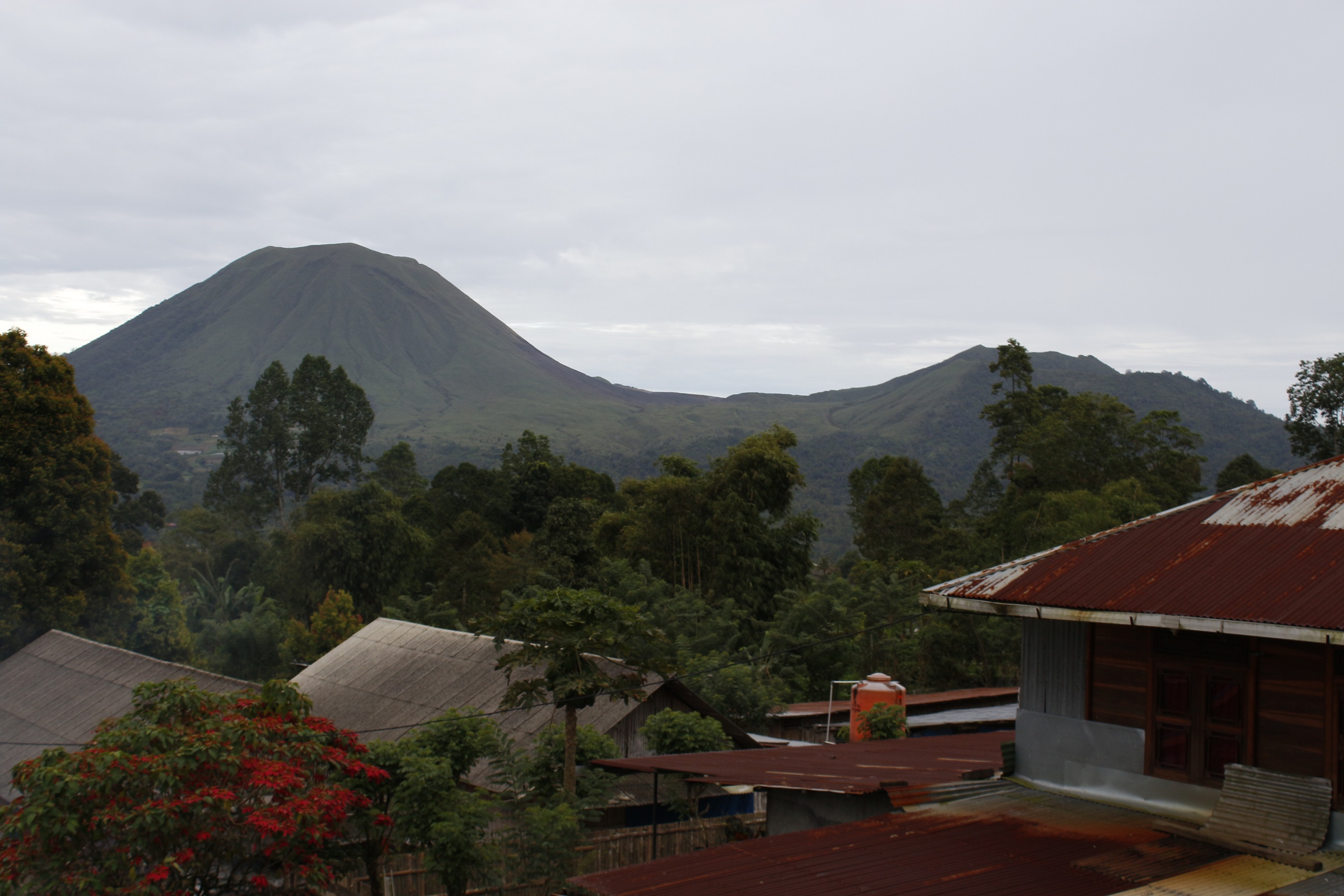
View of Lokon (left peak) and Empung (right peak). The active crater of Tompualan lies in between the two. 10 September , 6.01 am local time.
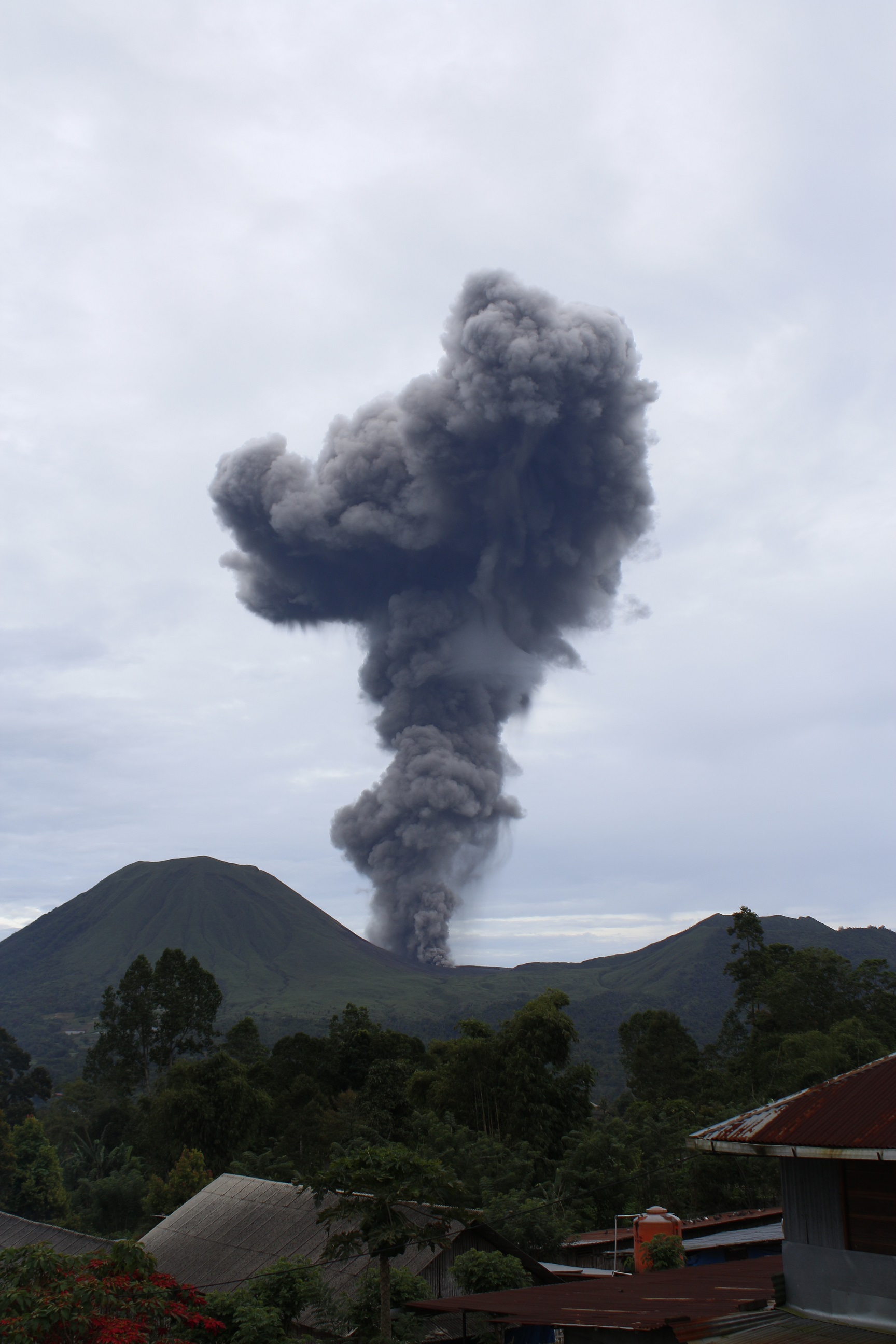
Early morning ash plume, from an explosion in Tompualan crater, Lokon-Empung volcano. September 10th, 6.19 am local time. The explosion began at 6.15 am. The volcano observatory estimated the peak plume height at 1 km above the vent.

10 September, 6.35 am local time. The short explosion is now over, and the ash plume is dissipating.
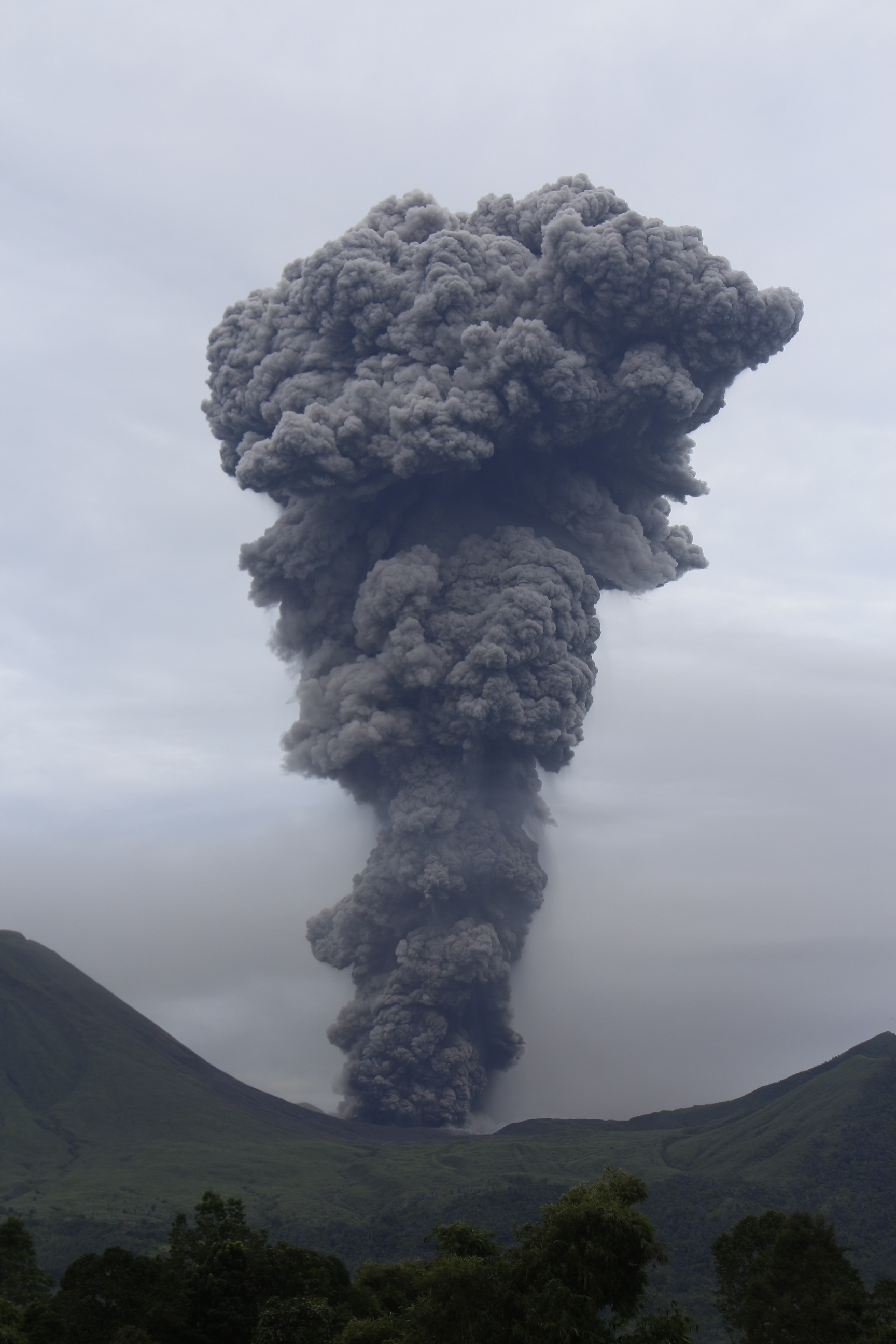
Larger explosion at Tompualan crater on 10 September at 6.59 am local time. The explosion started shortly before this point, and the volcano observatory estimated the eventual plume height to be 2.4 km.

The plume from Lokon-Empuang is now reaching its peak height, as it reaches the cloud base. 10 September, 7.01 am local time.
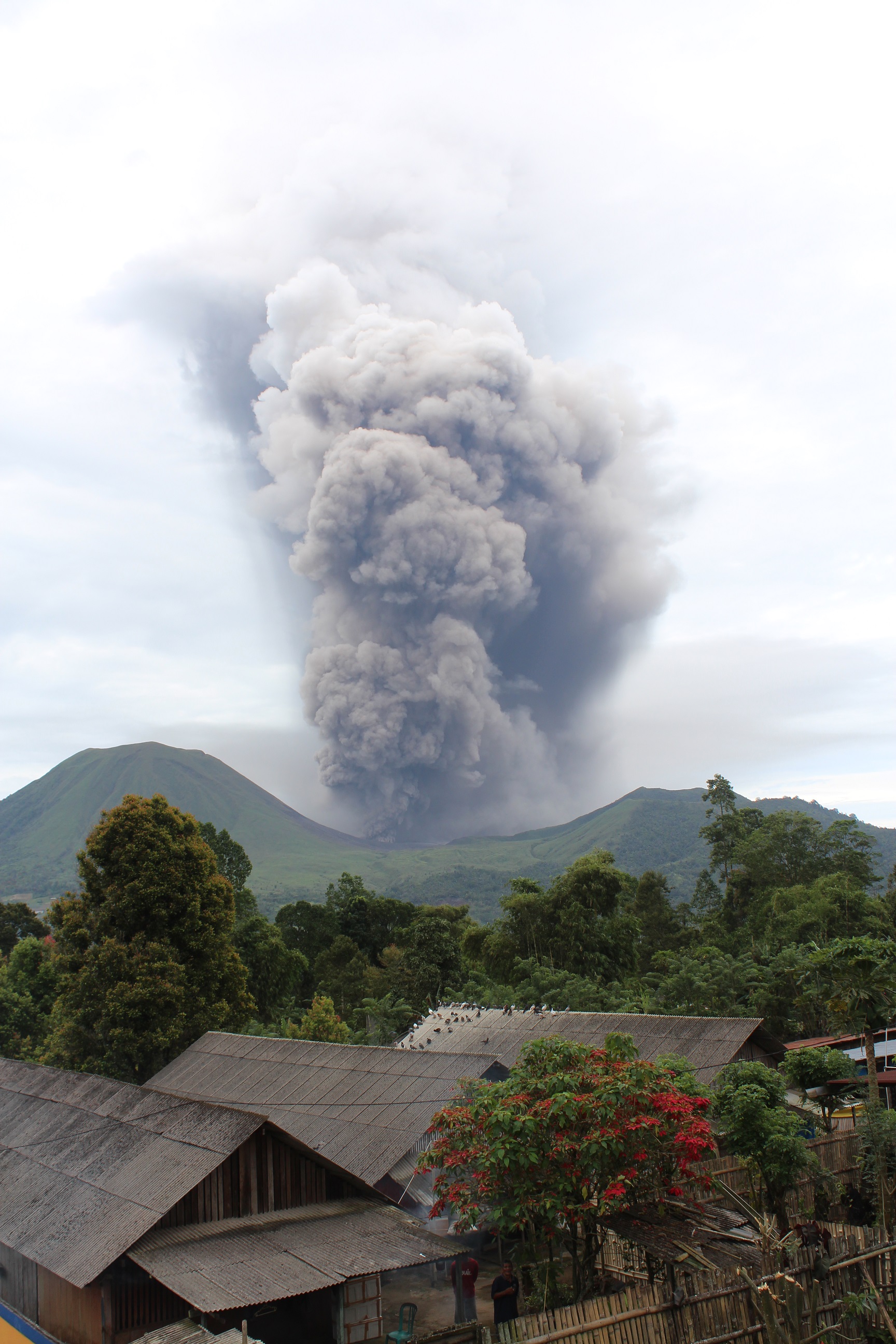
Mt Lokon-Empung, 10 September, 7.10 am. The main explosion has now ceased, and the plume is beginning to decay as ash particles fall out, and the plume is dispersed by winds.
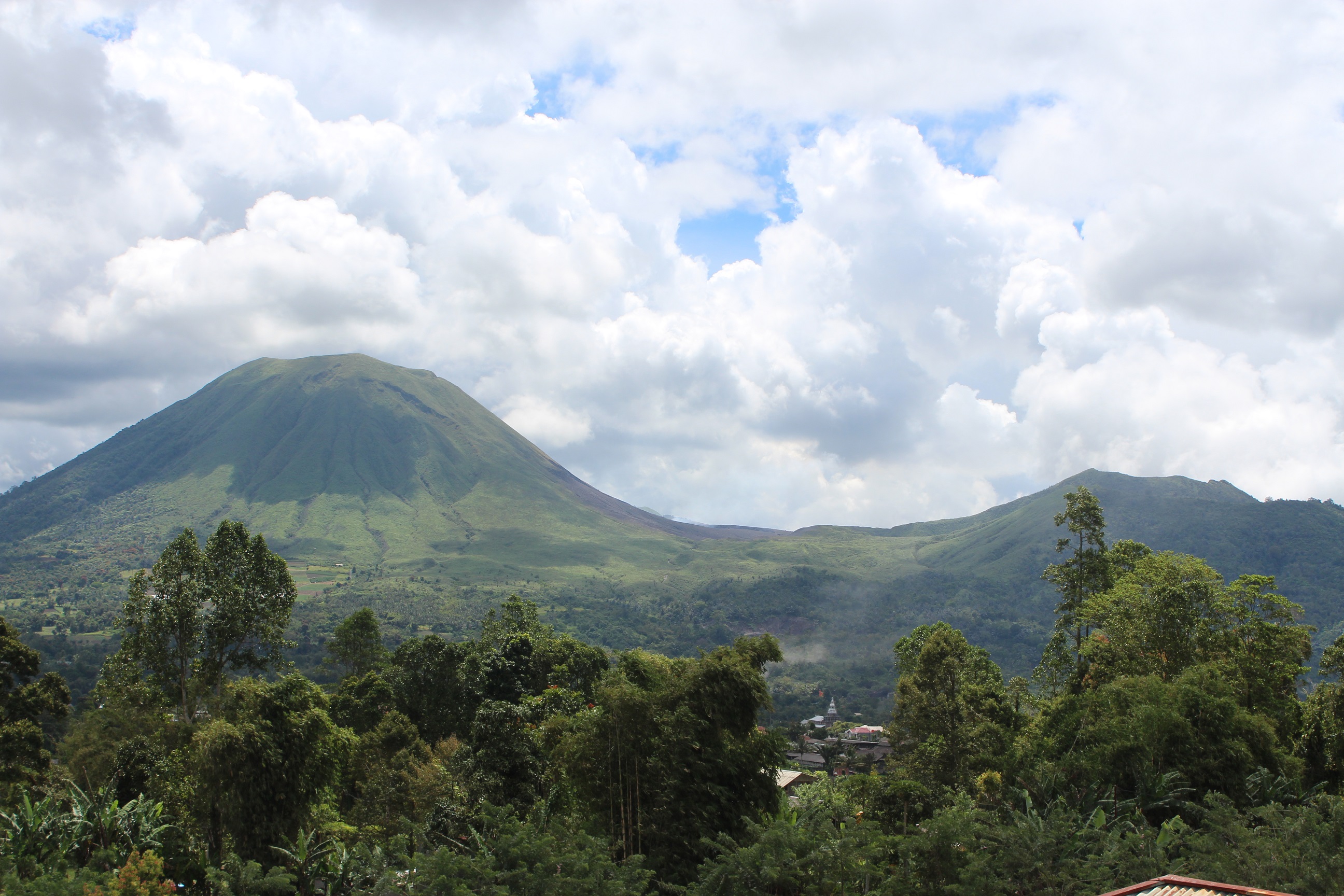
Mt Lokon-Empung, 12 September. Fume from the Tompualan crater is barely visible against the background meteorological cloud.
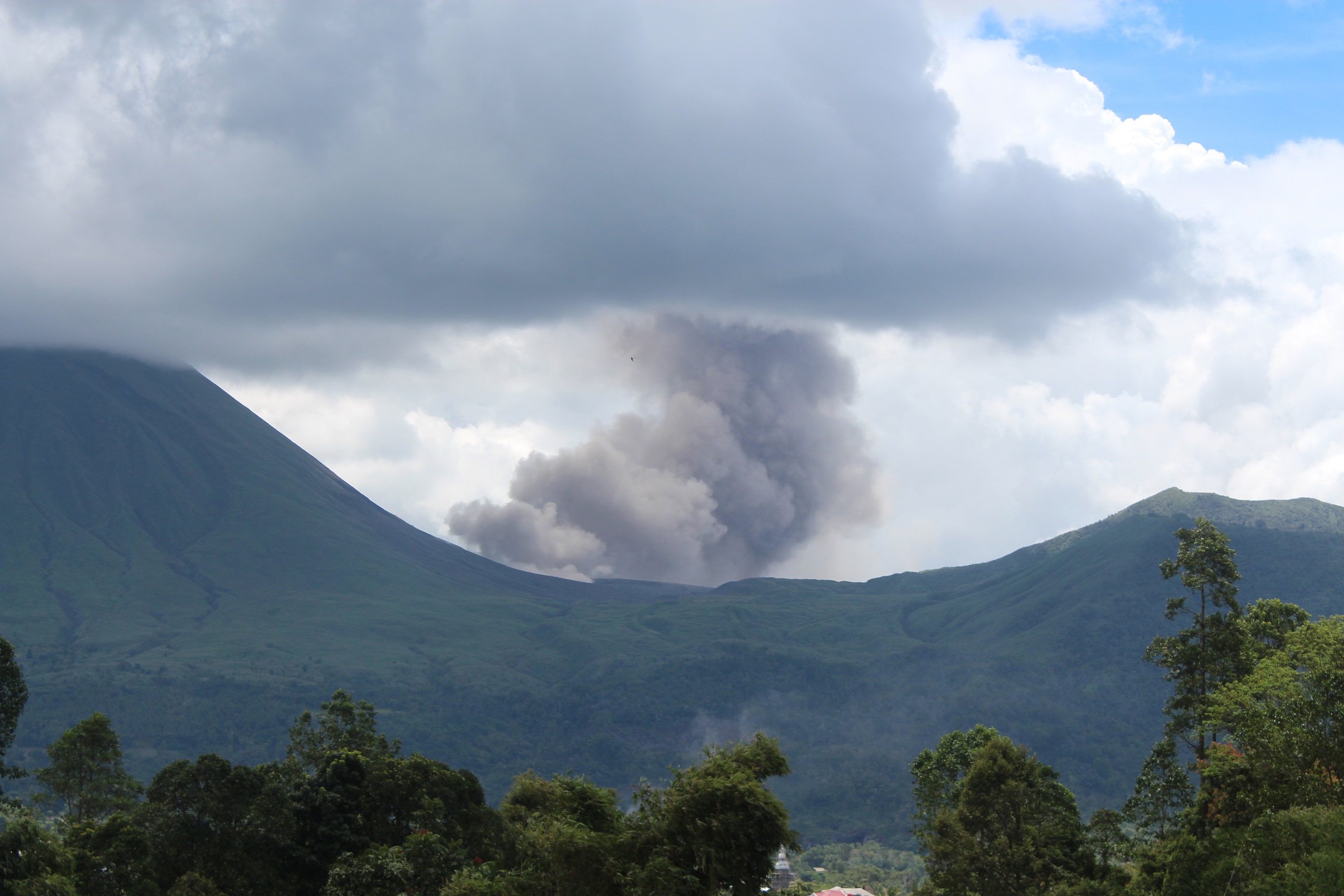
The explosion has ceased, and the ash plume is beginning to disperse. 12 September, 12.40 local time.
Further reading
The Volcanological Survey of Indonesia has a website that documents the current state of activity at its many volcanoes. Many of the local observatories have webcams – such as the one at Kakaskasen Volcano Observatory (KKVO) near Lokon.
Two recent blogs have documented the context of this volcanism, and the ongoing activity at Lokon:
Culture Volcan – journal d’un volcanophile. Culture Volcan has also posted a nice time-lapse video of the 12 September activity on YouTube, based on the webcam from KKVO.
Joe Bauwen’s Sciency Thoughts blog

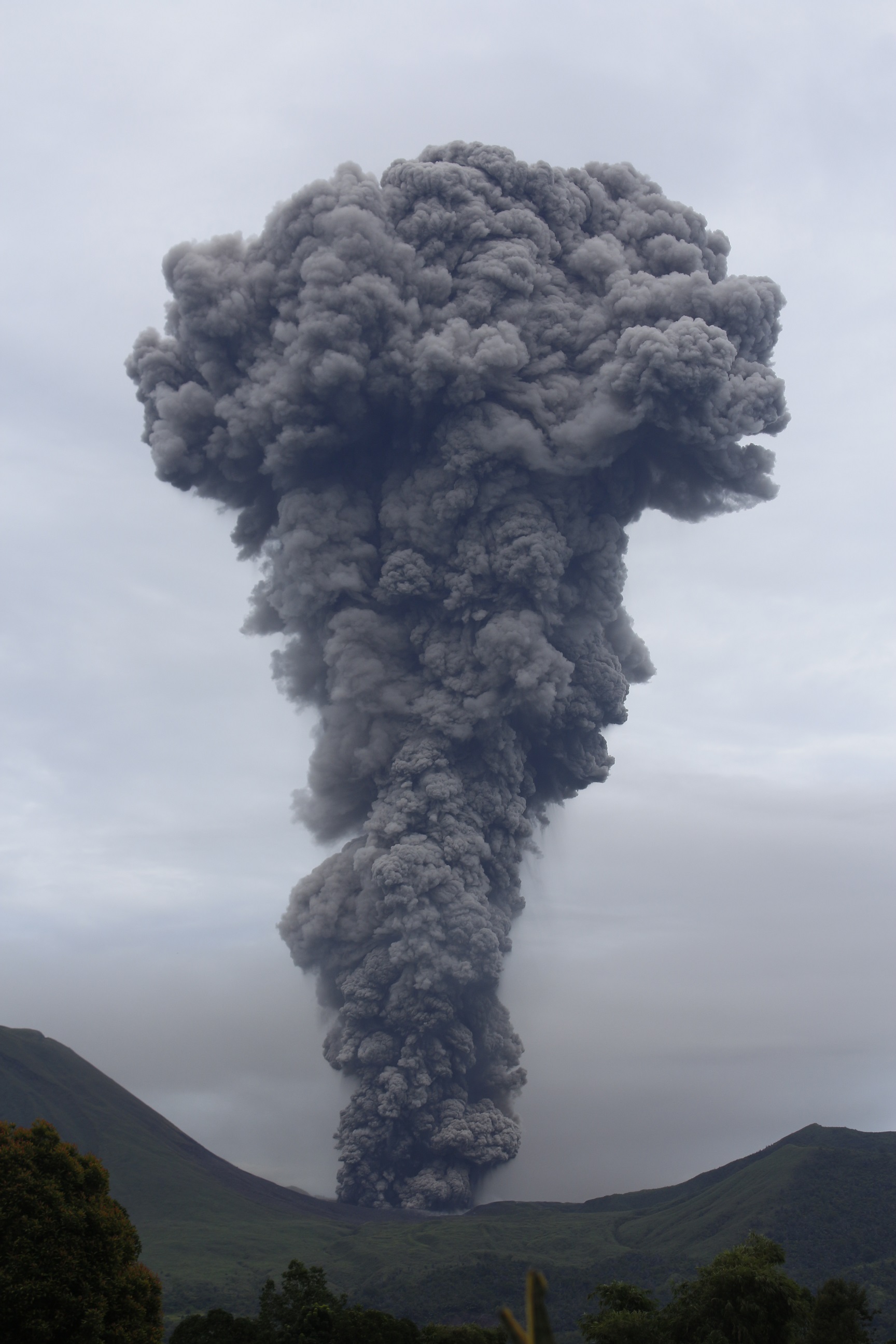
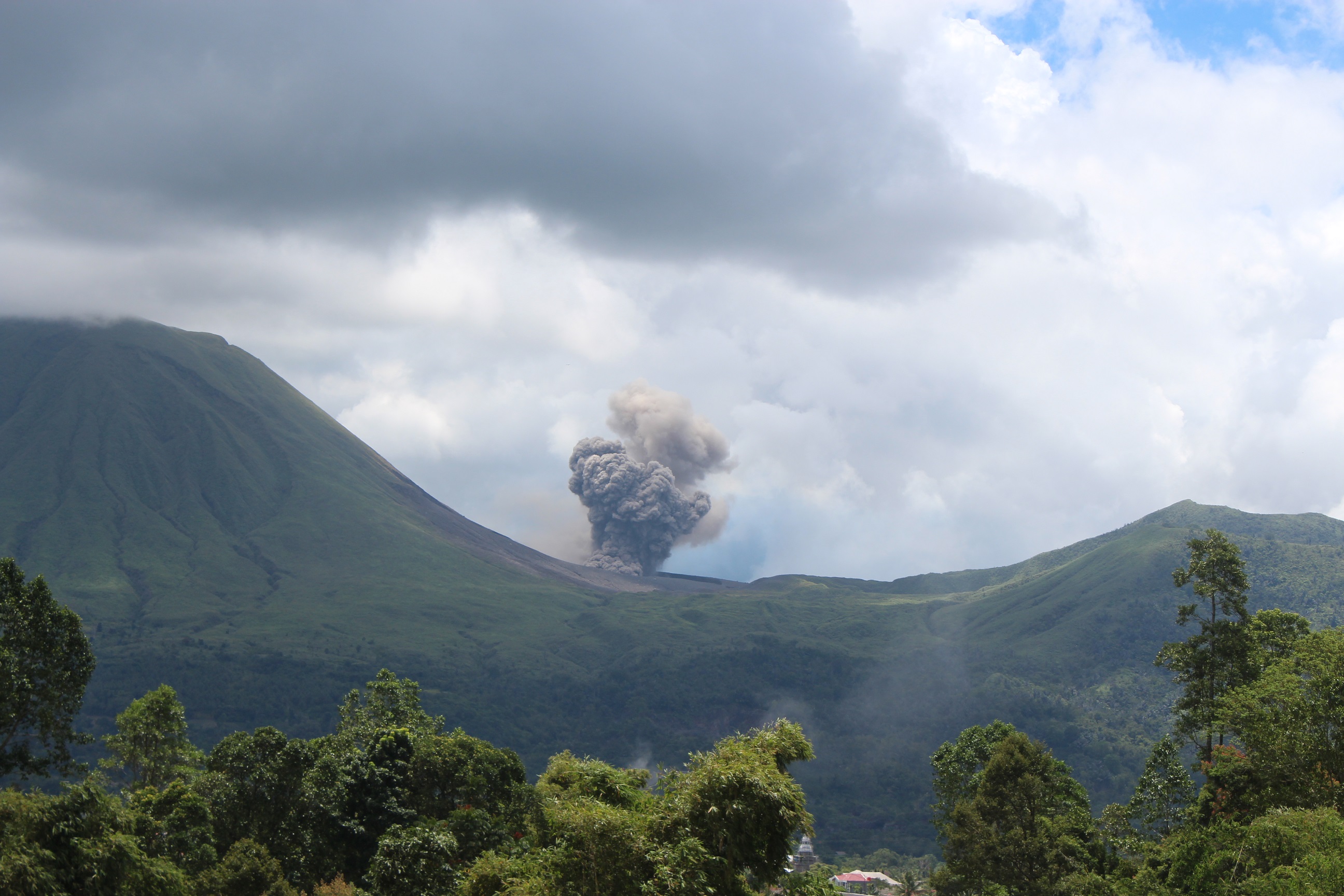
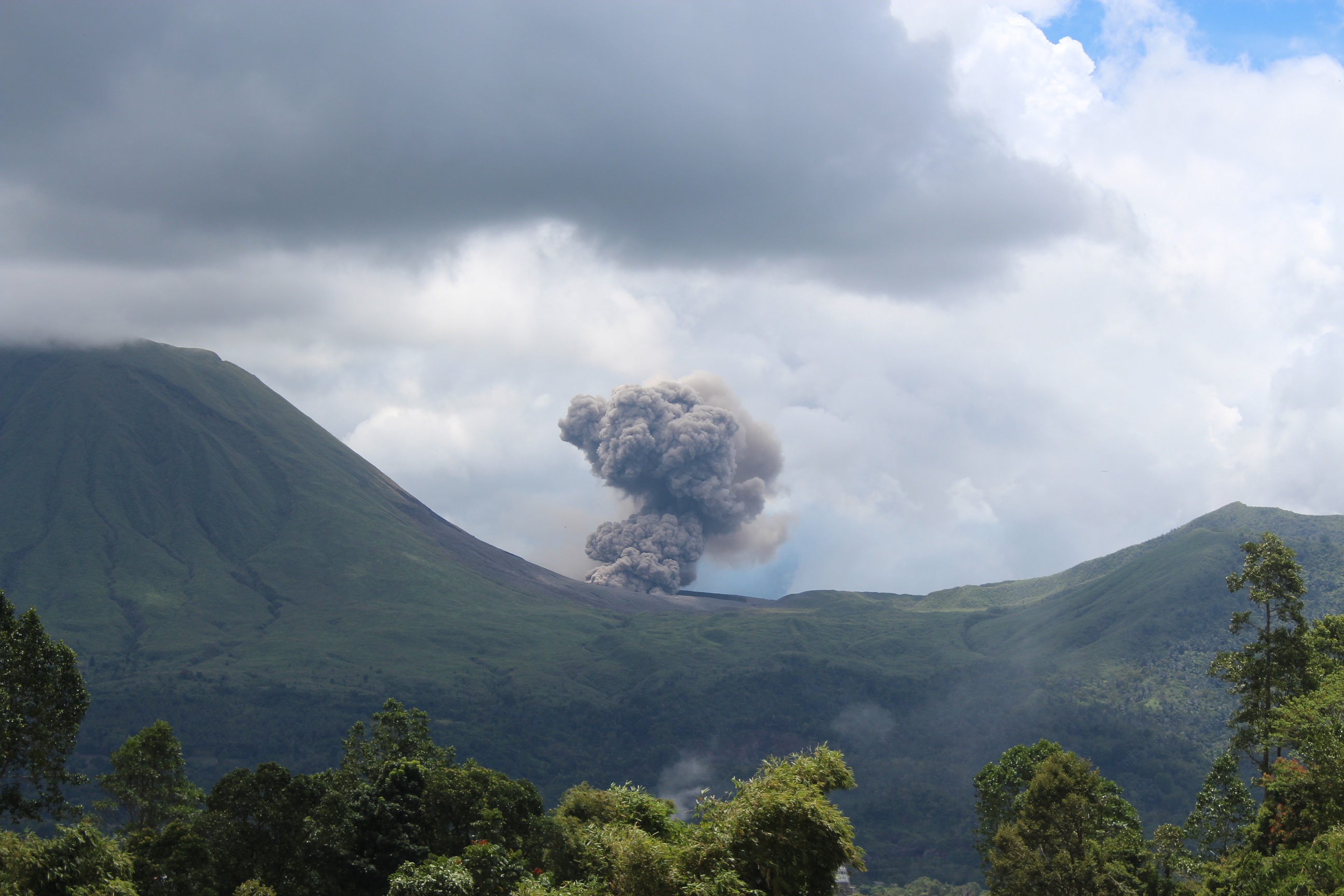
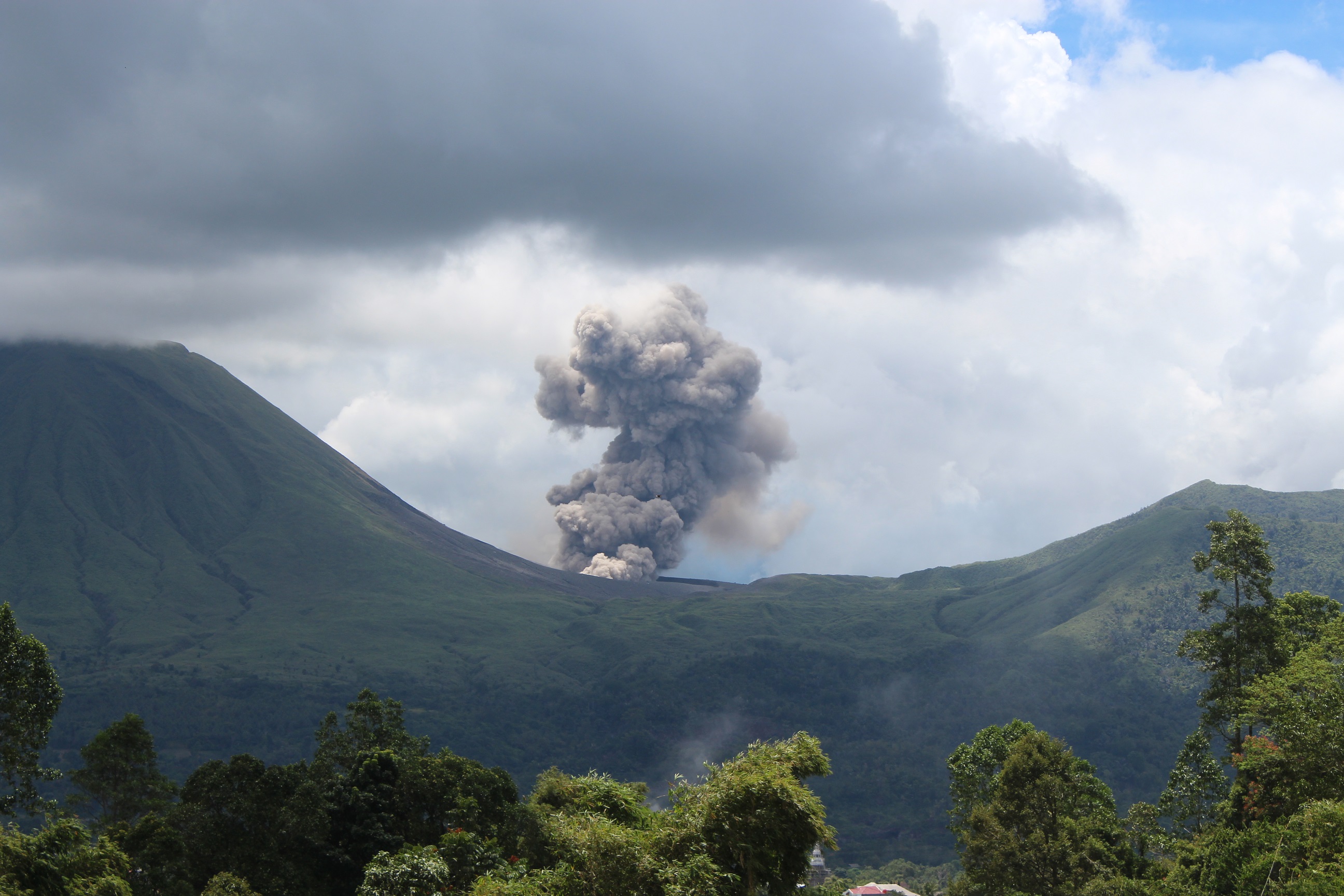
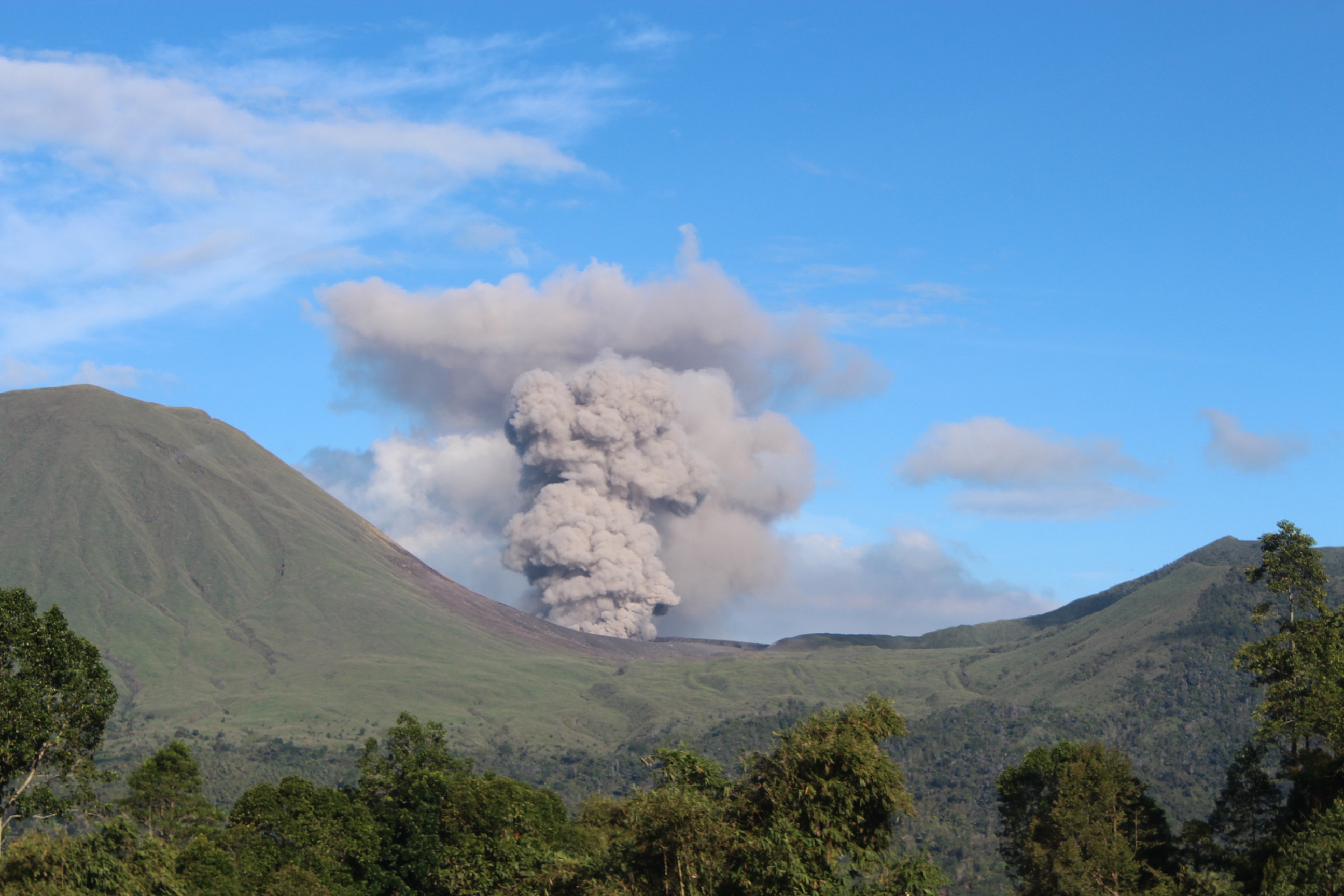
Pingback: Monitoring the London Volcano – londonvolcano